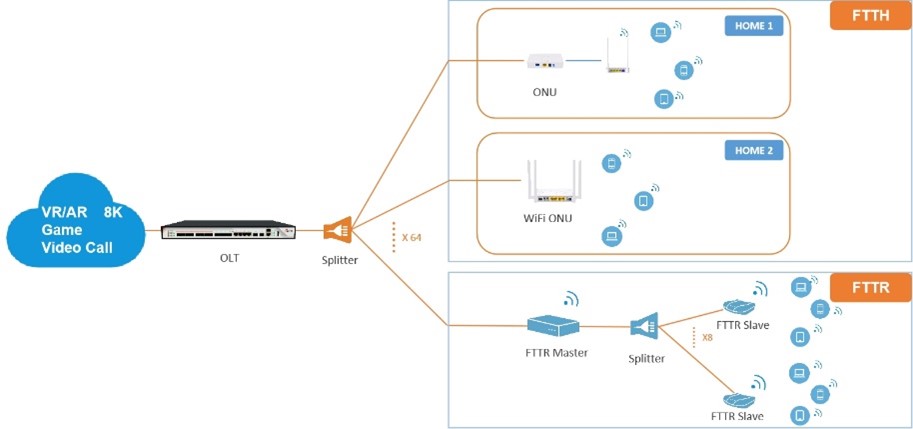In the past decades, the advent of digital technology radically changes peoples’ life and in every sector. ICTs provide the backbone infrastructure to facilitate digital innovation and business models innovations, collaboration, and the exchange of information, while reducing production costs and increasing productivity and efficiency.
Meanwhile, global warming has become to a major concern around the world. Global greenhouse gas (GHG) emissions have risen dramatically, increasing by 30% over the last three decades. The increase in global average temperatures is very likely driven by the increase in anthropogenic GHG concentrations.
The development of ICT and digital technologies opens many opportunities to tackling the environmental challenges such as climate change and reduction of carbon emission.
Fiber internet connections are being increasingly deployed across the world. Fiber networks provide high speed internet connection for businesses and households by deploying direct to their buildings and houses.
Increased data traffic leads to increased energy use. Various studies compare the energies efficiency and CO2 emission of different broadband technologies. Fiber is considerably more energy efficient than other traditional fixed cable access technologies.
- How smart home can contribute to GHG reduction
Turning our home into smart home is key to reduce CO2 emission. Smart metering of energy, water, heating and waste are key drivers when it comes to reducing households’ footprints. These smarter metering devices requires capillary networks connecting all relevant appliances and devices. Intelligence of the smart house require a nervous system that fibre networks can provide in the most CO2 efficient way.
Although FTTH is the most prevalent fiber deployment technology, the technology has some limitations. With the FTTH, that fiber is configured and managed through routers for whole-house networks, which can have dead zones in large house with insufficient signal coverage to provide a consistent network experience throughout the house. In addition, when there are technical problems, such as lagging and dropped connections with home network, it is usually very slow and costly for the operator to come to the home for repair.
FTTR (Fiber to The Room), is new type of in-premise fiber technology based on FTTB (Fiber to the FTTB and FTTH and bring fiber connection to every room to achieve whole-house gigabit(s) network speed – so that every corner gets a stable internet coverage with wired and Wi-Fi. The FTTR solution replaces the indoor network cable with optical fiber to break through the physical limitations of the network cable. It adopts a master and slave optical router integrated machine, supports the latest Wi-Fi 6 technology, and can directly deliver high-speed gigabit broadband directly to users.
Comparison FTTH & FTTR Network

Source: Cdatatec
FTTR is the extension of FTTH to extend the fiber cable connection to each room instead of using network cable to connect traditional optical modem with router in each room. Based on the passive nature of PON network architecture, fiber copper enables to save energy consumption up to 30% than the traditional copper-based network cable.
Furthermore, fiber optical cable, made of a particular type of glass, offers a big benefit in terms of the flexibility of bandwidth and reliability. In addition, because of physical features of fiber cable, such as more durable and less susceptible to harsh environmental conditions as well as lightweight and compact in size (the size of fiber cable is only 15% of traditional copper cable), there is no need to replace the existing indoor optical fiber cable when upgrading the network. A full-fiber network can save mineral resource use and waste, reducing climate and environmental risks.
With the progress of technology and the standardization of the technology, FTTR will reach more and more residences and business around the world to continuously help operators develop premium broadband services. The following figure describes the CO2 reduction impact of worldwide FTTR deployment:
Worldwide FTTR Deployment cumulated CO2 savings (Since 2021, CO2 tons)

Source: World Bank, IMF, OECD, IDATE, Telecom operator’s interviews, Telecom equipment manufacturer’s interviews
To learn more, don't miss the Green All Optical Forum and find out the new white paper release!
AGENDA | February 28, 2022
All-optical Connections Enabling the Green Network.
|
|
|
|
|
|
LOCATION

Venue
W Hotel Barcelona
Address
Plaça Rosa Del Vents 1, Final, Passeig de Joan de Borbó, 08039 Barcelona, Spain
Amongst the speakers
Interested? Join the discussion!
I register
